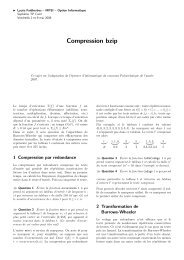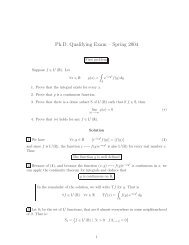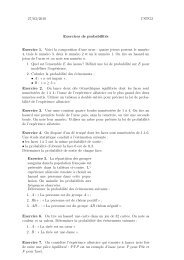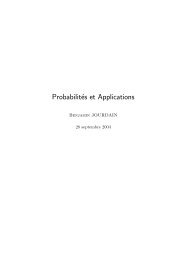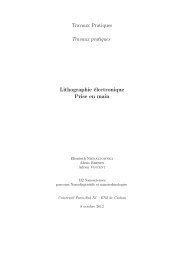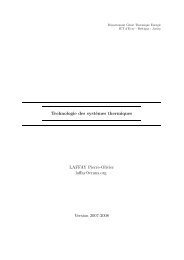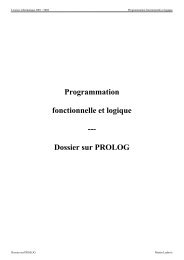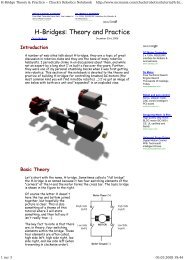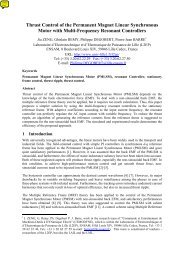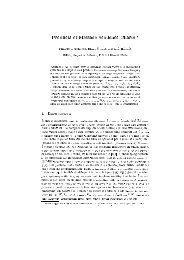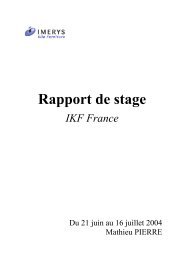A Hybrid Factored Frontier Algorithm for Dynamic Bayesian Networks
A Hybrid Factored Frontier Algorithm for Dynamic Bayesian Networks
A Hybrid Factored Frontier Algorithm for Dynamic Bayesian Networks
You also want an ePaper? Increase the reach of your titles
YUMPU automatically turns print PDFs into web optimized ePapers that Google loves.
0.30FF Exact Inference <strong>Hybrid</strong> FF (n^3 Spikes)0.25M t ( E, [0,1) )0.200.150.100.050.001 9 17 25 33 41 49 57 65 73 81 89 97Time pointsFig. 2. M t (E, [0, 1]) <strong>for</strong> all t5 ResultsWe have implemented our algorithm in C++. The experiments reported here were carried out on a Opteron2.2Ghz Processor. First we ran HFF on the DBN <strong>for</strong> the simple enzyme catalytic system shown in 1.We fixed the parameters of the system using known values and divided the value space of each variableinto 5 equal intervals [0, 1), [1, 2), . . . , [4, 5] and assumed the initial distributions to be uni<strong>for</strong>mly distributedover certain intervals (see [18]). The time scale of the system was set to be 10 minutes which was evenlydivided into time points ranging over [0, 1, . . . , 100] . We fixed the number of spikes to be 4 3 = 64 andran HFF and FF. This being a small example, we could compute the probability distributions over the states<strong>for</strong> each time point exactly. From this we derived the exact marginal distributions <strong>for</strong> each species. FFper<strong>for</strong>med well <strong>for</strong> the product species P . However <strong>for</strong> E, ES and S it deviated from the actual distribution<strong>for</strong> certain marginals. For instance, <strong>for</strong> E and the interval [0, 1), it deviated by as much as 0.168 <strong>for</strong> themarginal M t (E, [0, 1)) as shown in Figure 2. This figure also shows the time evolution of this marginal <strong>for</strong>HFF and the exact one. As can be seen, the HFF profile is almost the same as that of the exact one (in factthis was already the case <strong>for</strong> σ = n 2 = 16). Figure 3 shows the maximum error curves <strong>for</strong> FF and HFFrelative to the exact one; it the maximum of the errors taken over all 5 intervals at each time point. As canbe seen, the maximum error incurred by HFF is lower.Maximum absolute error <strong>for</strong> E0.180.160.140.120.10.080.060.040.020FF Error <strong>Hybrid</strong> FF Error1 9 17 25 33 41 49 57 65 73 81 89 97Time pointsFig. 3. Maximum Error of FF and HFF with respect to exact <strong>for</strong> E7



